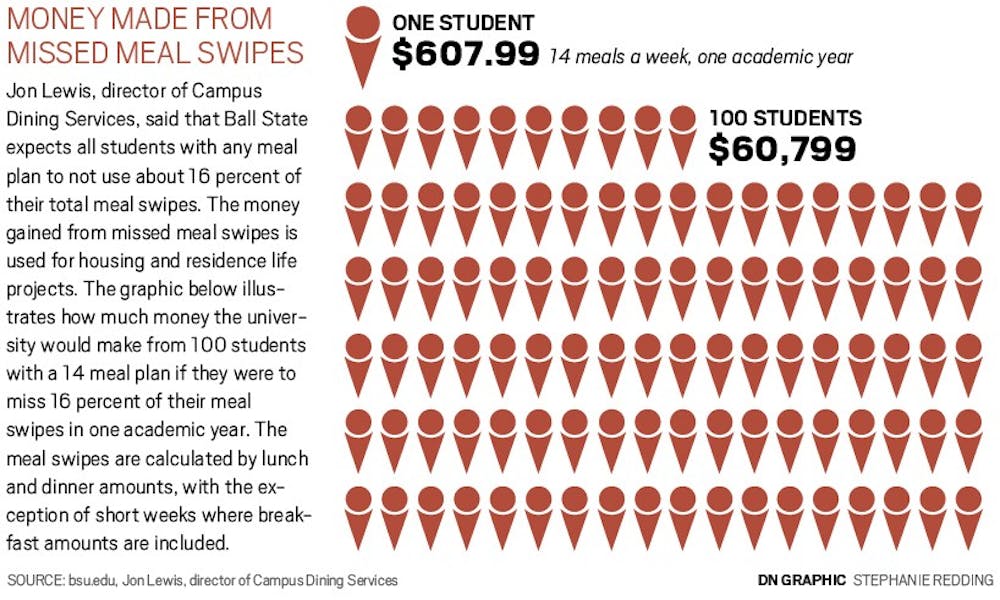Despite Ball State's different meal plans, students use only 84 percent of their meal swipes, the director of Campus Dining Services said.
Jon Lewis said if students did use all of their $8.20 meal swipes, Dining Services would have to raise their prices on meal plans.
“We expect all students [across all meal plans] to not use about 16 percent of their meals,” Lewis said.
Funds from the meal plans stay within housing and dining, going to projects like the Johnson A and B renovations.
Maddy Smith, a freshman telecommunications major, said the lost meal swipes should go to dining plus, because they paid for it. She sometimes forgets to visit dining halls that are nearby throughout the day, and loses meals for that day.
While some students complain about the meal plan at Ball State, Lewis said Ball State's plan is effective compared to other schools. Purdue students use about 66 percent of their meal swipes, he said.
At Purdue, students can choose from several plans that allow a number of meal swipes per week or they can choose a plan that gives students 246 meals per academic year, according to their website.
At Indiana University Bloomington, students utilize I-Bucks 60. Instead of having a number of meals with an $8.20 limit, student’s ID cards are preloaded with the allotted amount of money they had chosen, according to IU's website. Whether it be the Max ($4,200), Plus ($3,700), Standard ($3,200), or Mini ($2,600) plan, the students are allowed to buy what they want.
“There is no perfect meal plan. Every meal plan has its pros and cons,” Lewis said. “Some will argue the good and the bad of every dining plan. On the last Friday of the semester, you are guaranteed to have a meal at Ball State, while down in Bloomington, you could be out of money.”
Cameron Mueller, a freshman marketing major, said he does not think the system benefits the students financially. He says the plan at IU would help students be better money managers.
“Students are coming into their freshman year and aren’t very well-versed in how to manage their money,” Mueller said. “Students waste their swipes on things that they would waste or they go over the $8.20 amount and eventually run out of Dining Plus.”






